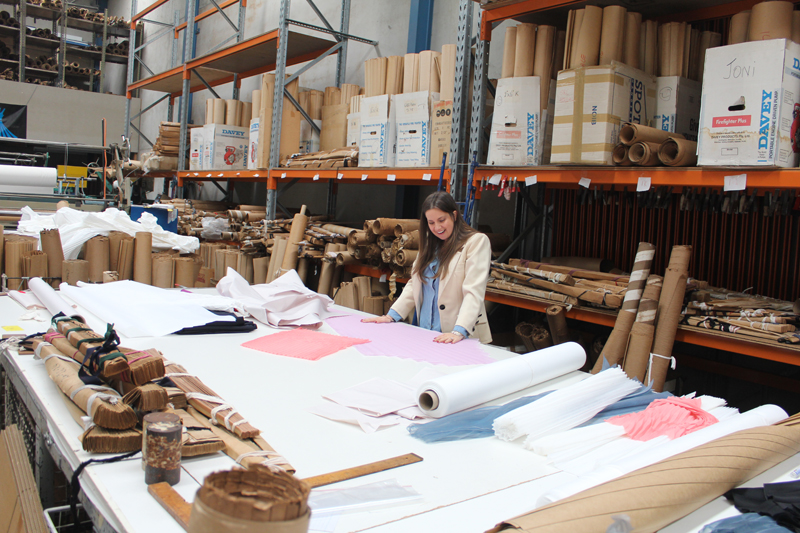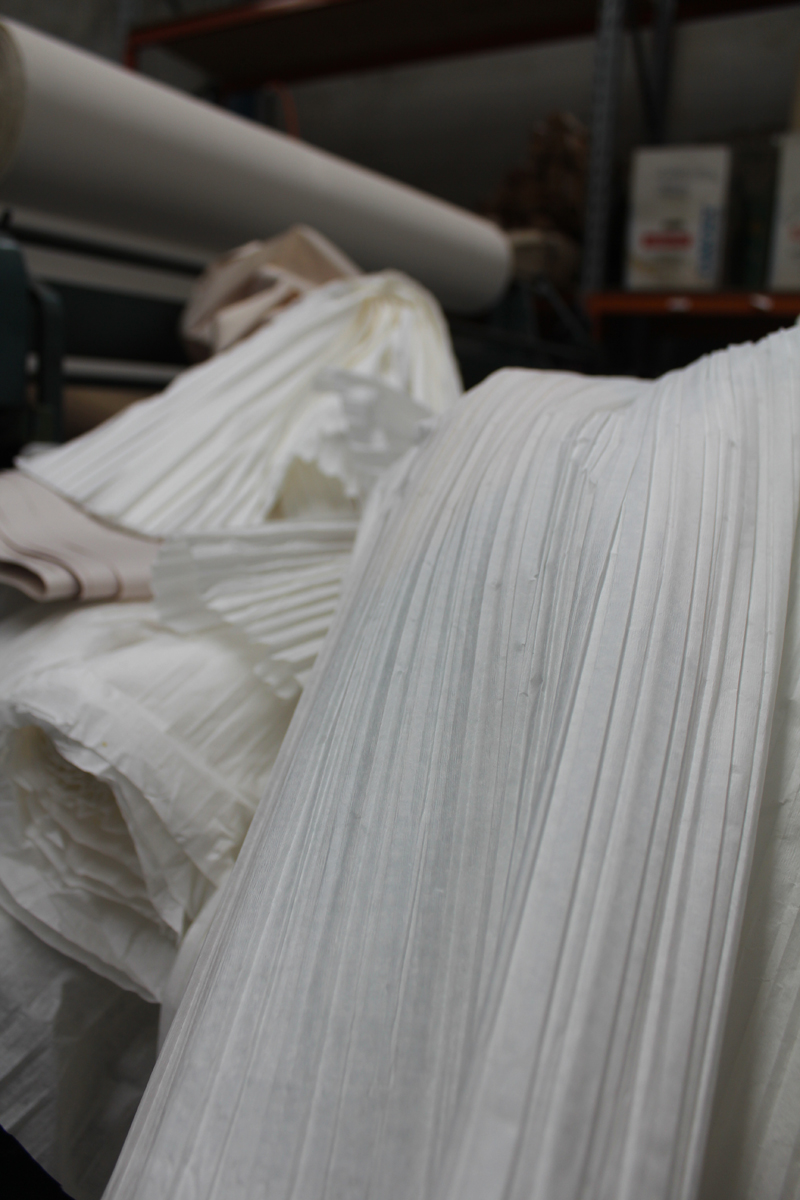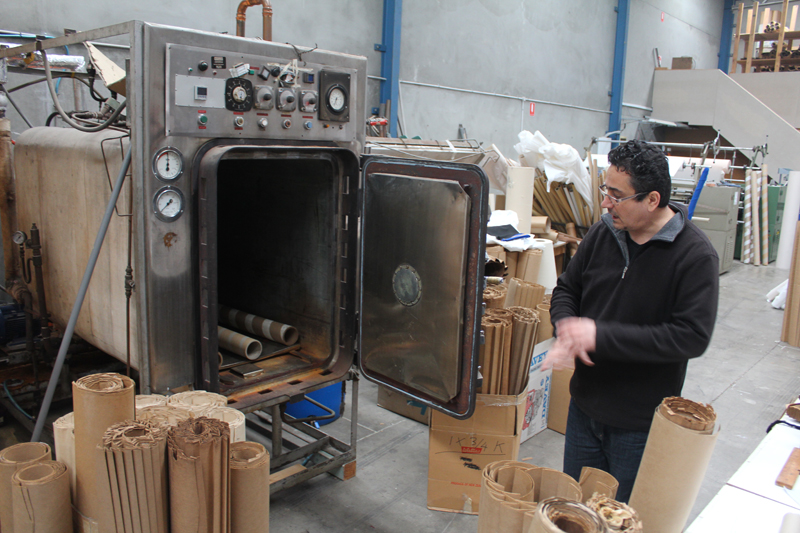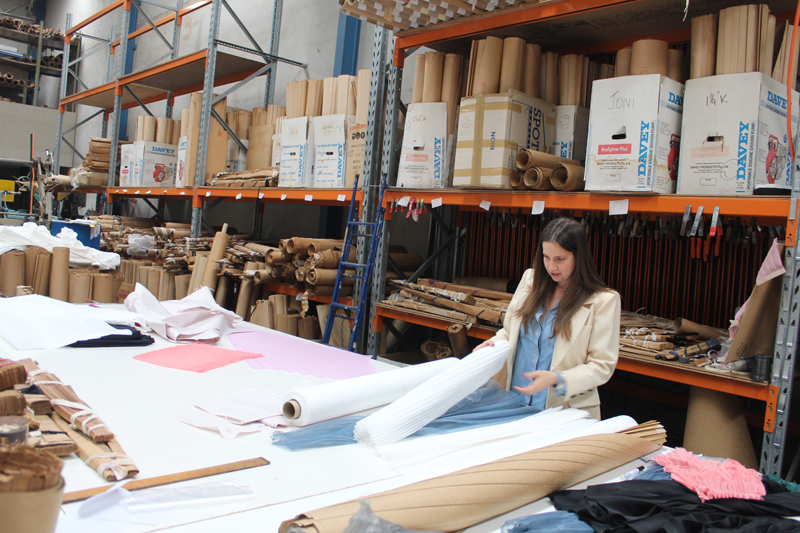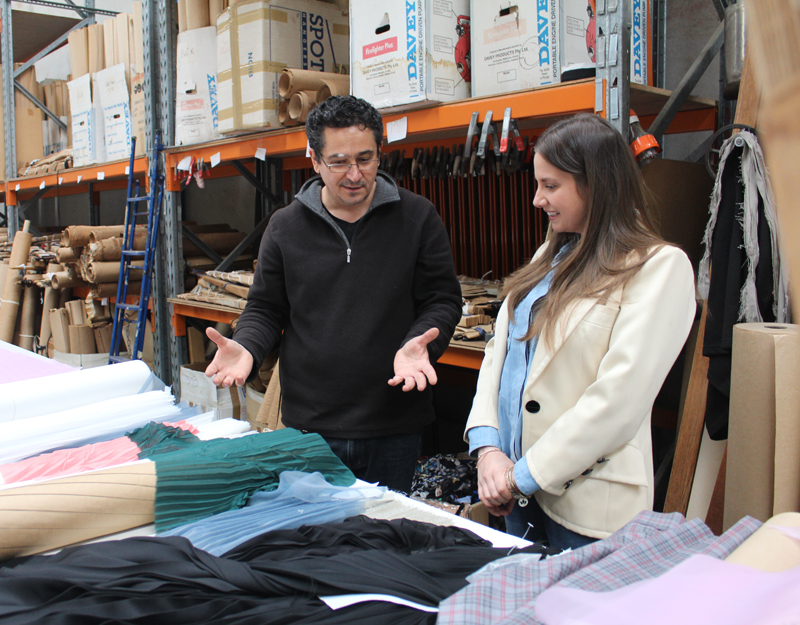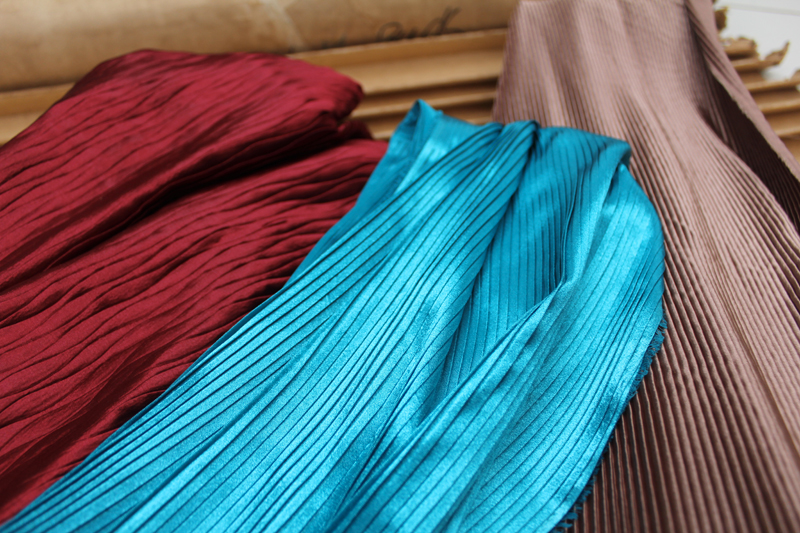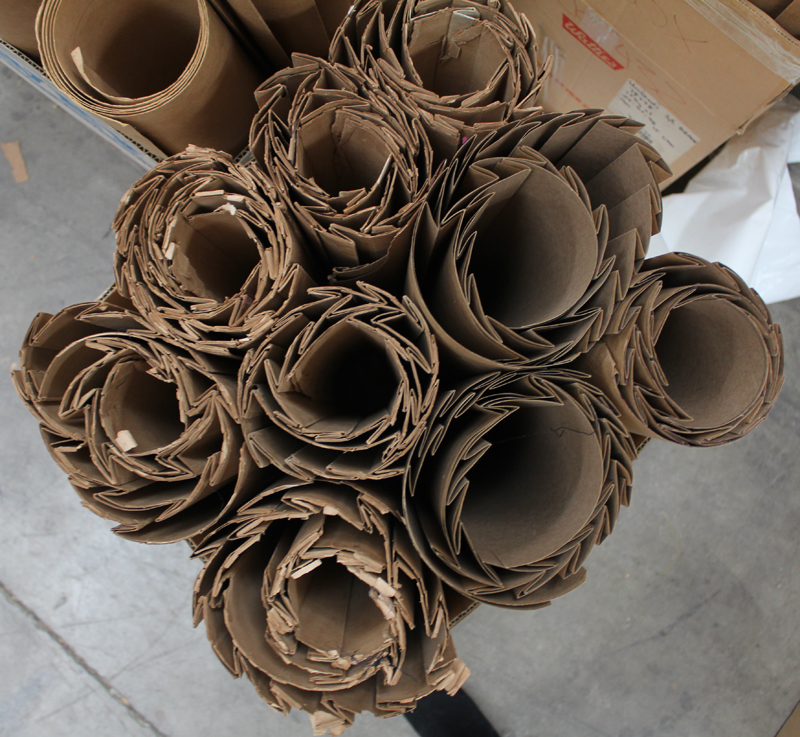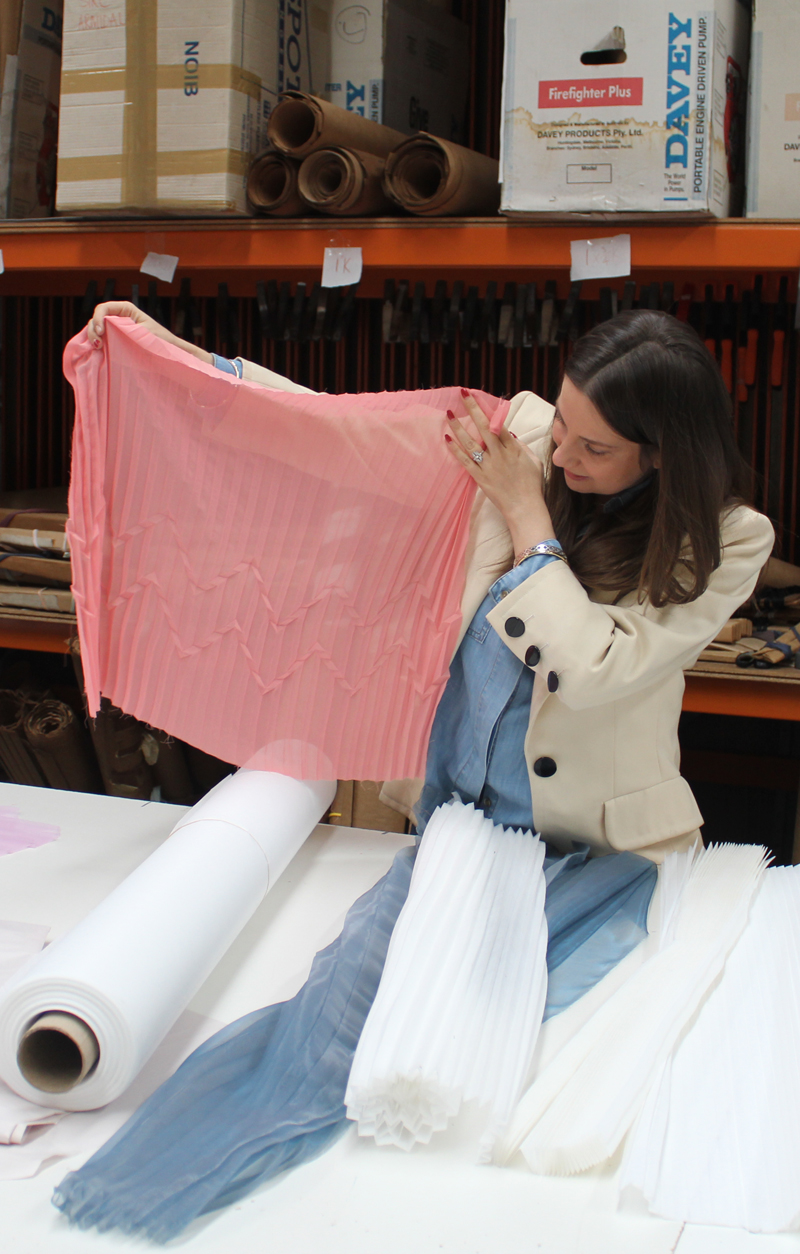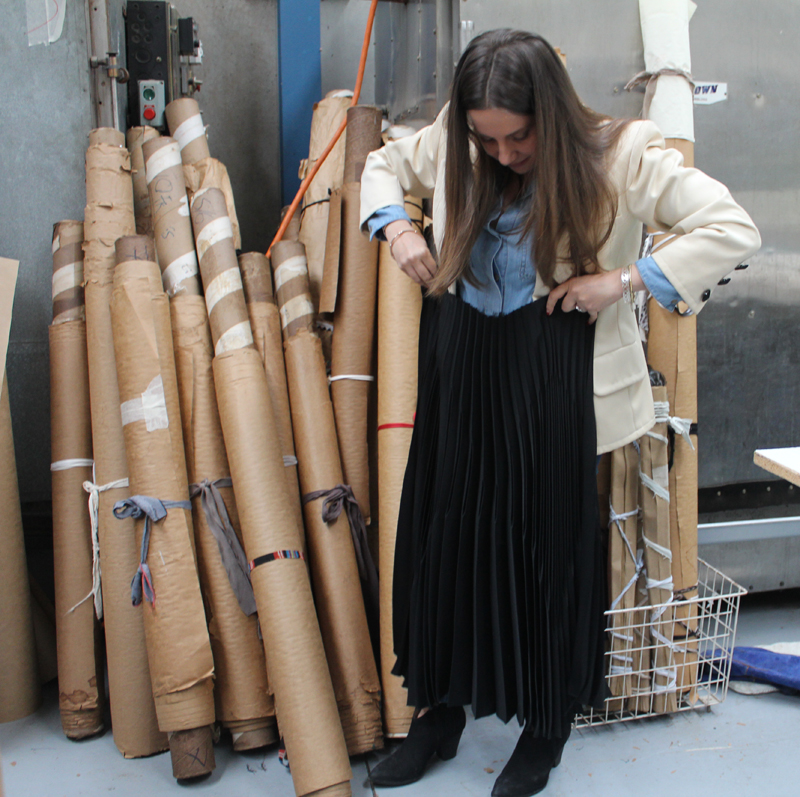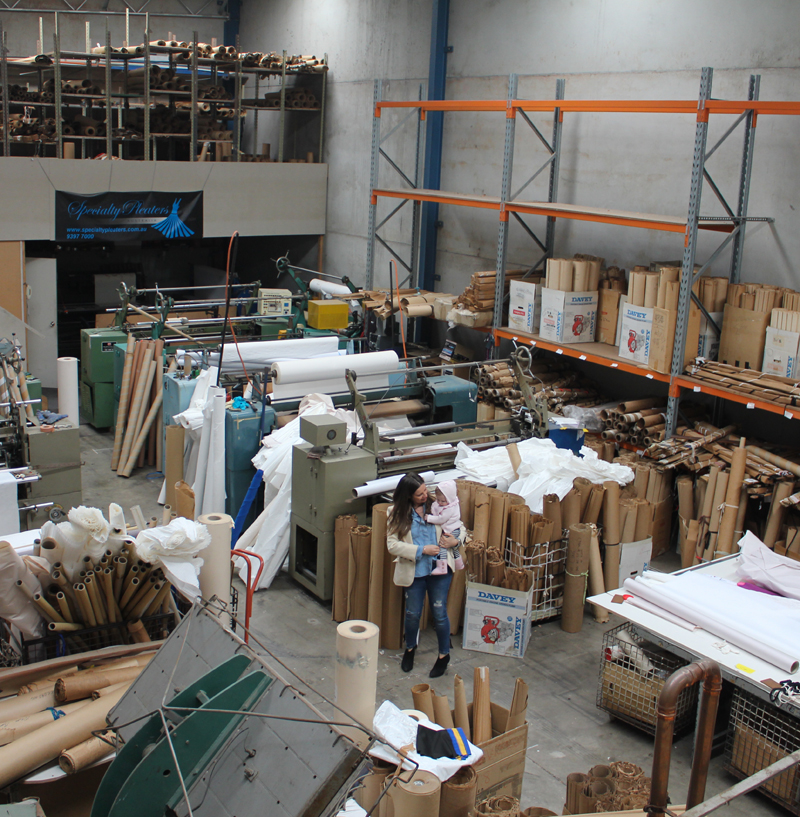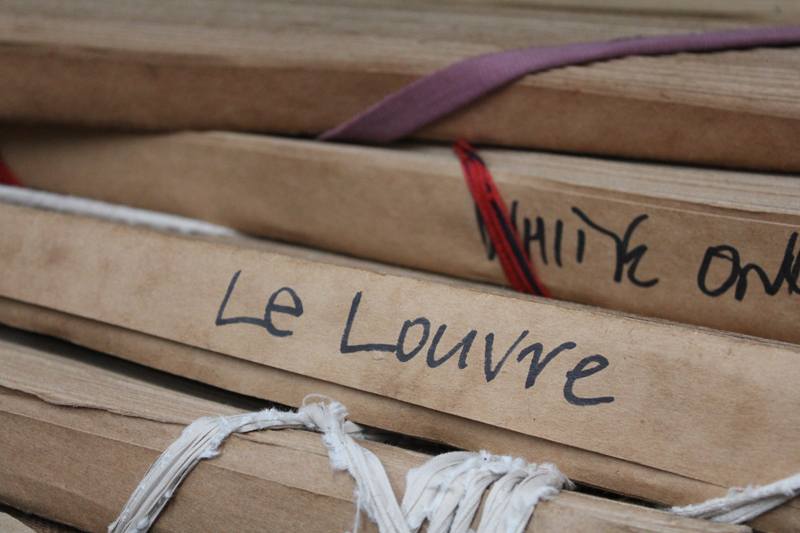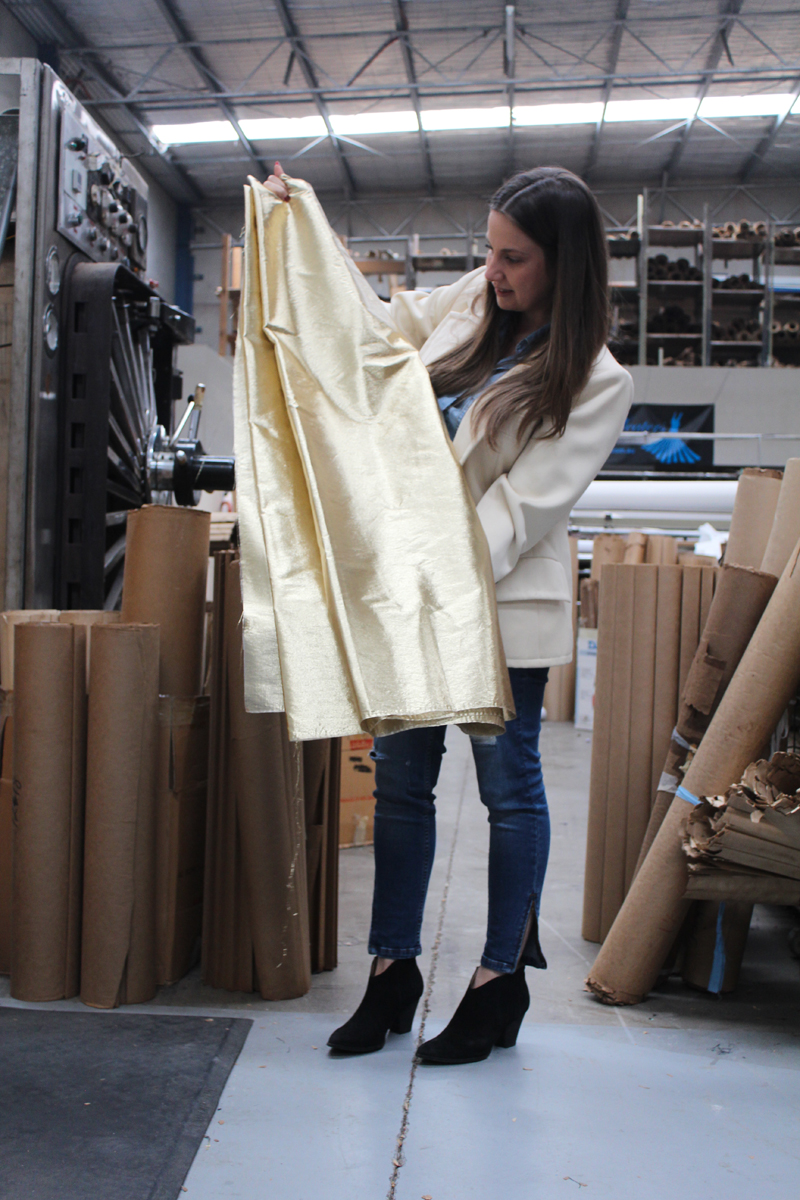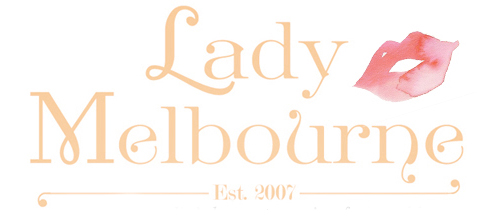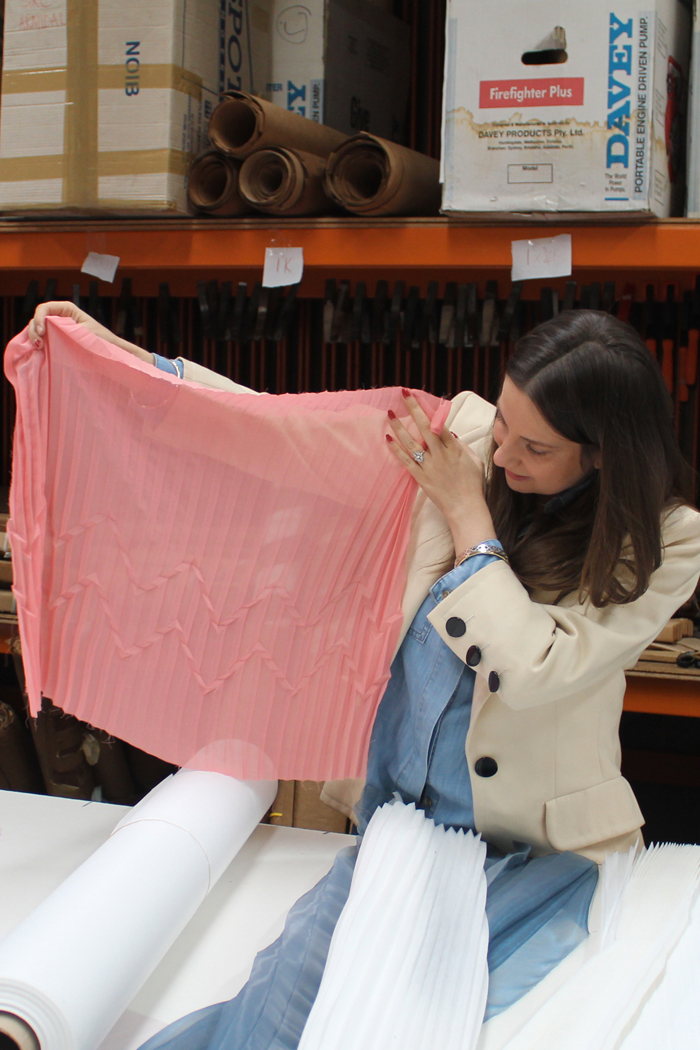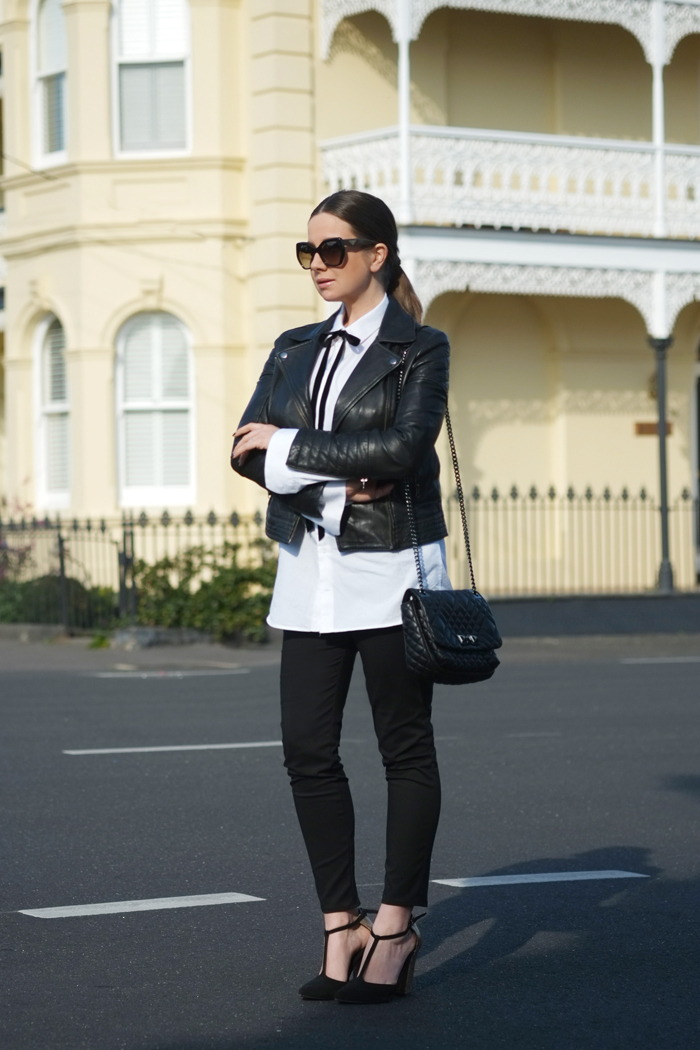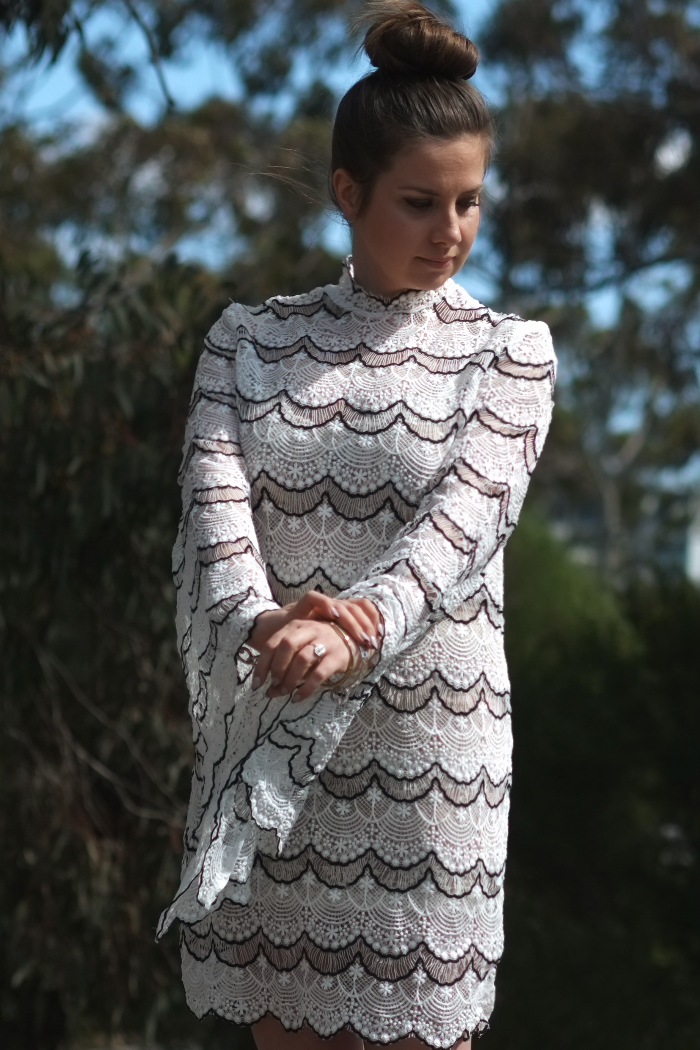The day I arrive at Specialty Pleaters, former investment banker Simon Zdraveski is dealing with a broken steam oven which, I’m about to learn, is crucial to the pleating process.
“The business had been for sale for a couple of years but no one had bought it – it just wasn’t financially viable, and if no one did, all of this history would be lost,” he tells me while trying to wrangle a screwdriver into some sort of switch.
“It needed someone to step in and see if something could be done, and that person was me”.
“So,” I enquire, “do you have a love for pleats, fashion or…industrial workshops? How on earth did an investment banker end up here?”
“A fetish for pain,” he says laughing. “I actually do love pleating. I don’t know why as I’m just a jeans and sloppy joe kinda guy, but I think pleats are a European thing, I’ve got European heritage and I like the process. I met George from International Pleating in New York, and thought to myself, maybe I can give this a go”.
Walking around Specialty Pleaters, you soon realise there’s a lot of Melbourne rag-trade history tied up there. Eighty-nine years old when he bought it, the business stored moulds and pleats for some of Melbourne’s finest couturiers, including Le Lourve’s famous Pleated Model dress created in the 1930s. Still in production, it’s one of the last remaining uses of Specialty Pleaters for the production of couture in Melbourne, if not Australia.
“The bulk of the business has been in things like stock standard pleating for school uniforms, but I’m hoping to take it in a direction where it can be all about fashion again,” he says.
“Can people come in and get things made then, is that possible?” I enquire.
“Absolutely, we’ve had costumes come in for musicals that need re-pleating, and we recently did a skirt for a lady in Shepparton who came to us with a Fletcher Jones skirt on its last legs she’d had for 50 years. She wanted another just like it and we were able to pleat the fabric for her exactly the same. She loved it!”
“Another lady came to us with an Armani dress she’d bought, but thought it was too short and wanted a pleated hem to match other pleating on the dress. She loved the dress and bought it knowing it was too short, and then came to us to get it added. It needed a precise hem – and we were able to do that”.
“The fabric is put between the moulds, and then into the steam oven for anything from 15-45 minutes. Once it comes out, aside from cooling, it’s complete,” he says, placing fabric onto a mould then into the oven he’s been adjusting to demonstrate.
In preparing this interview and article, I realise I’ve had an amazing glimpse into the behind-the-scenes process of a true old-school textile business. Although it’s not somewhere you can walk in off the street and browse racks of garments, it is somewhere you can go to make or upgrade clothes you already own.
Without businesses like Specialty Pleaters, Melbourne wouldn’t be able to wear the mantle of Australia’s fashion capital. They provide services enabling designers and creatives access to age-old techniques, offering vital support to an industry that’s crucial to our city’s culture, both creatively and economically.
“Because if no one uses this, it all gets lost,” says Simon. “We’re the last remaining specialty pleating business in Australia. In fact the only other place you can get moulds like ours made is Europe; the skill set doesn’t exist here any more. It means each of our moulds, and we have hundreds, are worth about 300 Euros each. So there’s a lot at stake financially, and historically”.
Like a well-made coffee, trams, interesting laneways, grungy Docklands house parties, superb live music venues, the Melbourne shuffle, unpredictable weather and even the football, businesses like Specialty Pleaters are an essential part of Melbourne’s lifeblood.
